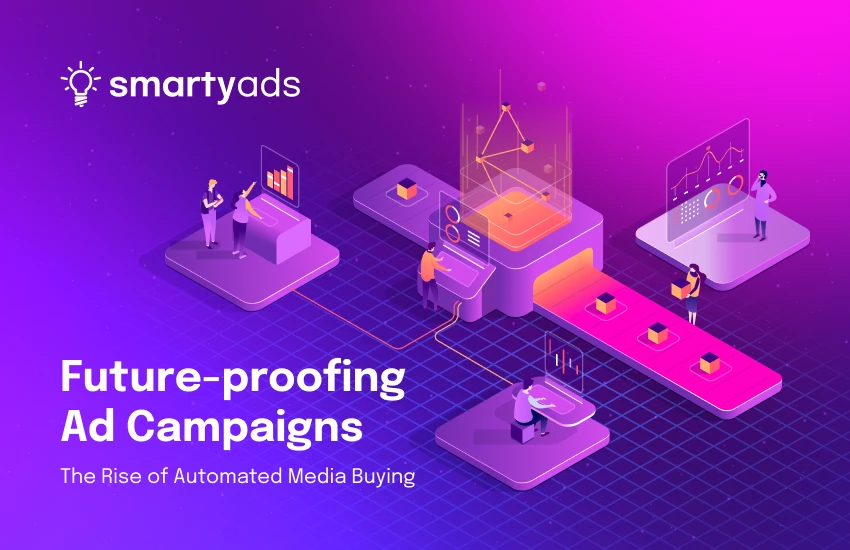What's best — a broad marketing strategy or narrow marketing? With the advent of programmatic advertising, many marketers and media buyers resolved the major advertising issue — serving irrelevant impressions to the wrong audience.
Thanks to the built-in targeting in programmatic platforms, an average marketer gets the chance to target an audience according to certain characteristics: age range, location, preferences, etc.
By running narrow campaigns directed only to a specific target audience, the brand serves ads only to potentially interested customers or clients who are most likely to convert. Indeed, ad tech helps to automate many marketing efforts; however, when you focus too much on particular targeting characteristics, you also increase your chances of limiting your traffic too much. So, what's better — broad vs. narrow targeting, and how to adjust your digital marketing campaigns correctly on DSP?

What is a broad marketing strategy?
The idea of a broad strategy implies that the advertising message will be seen by all people on a particular channel (TV, radio, webpage, billboard), irrespective of their targeting characteristics.
The simplest example of broad marketing can be taken from the past, when brands relied on mass broadcasting ads on linear TV or radio to introduce their products or services.
With this marketing approach, a business could undoubtedly get the ultimate market reach as the ad was delivered to as many people as possible. The brand could benefit from increased awareness and a large pool of lead base.
In this way, a particular ad could also reach many people to whom the brand's service or product was irrelevant — e.g., women watching ads for men and vice versa. With this, no matter how well the marketing content is crafted, it won't reach the desired objectives — promoting a purchase or increasing sales.
More so, broad marketing strategies imply that the advertiser (a brand or a company) should spend more for running an advertising campaign as each impression costs money.
Thus, at some point, companies started thinking about eliminating investment in impressions that will unlikely convert so that ads could be delivered only to potential customers. That's how narrow marketing came to the scene.
What is a narrow marketing strategy?
The idea of narrow marketing wraps around catering the promo message to a particular niche of customers. The main benefit of this approach is that a company can significantly eliminate the spending for serving a campaign by focusing on smaller audiences who are more likely to convert.
Narrow marketing doesn't only mean narrow targeting. If you want to focus on a particular niche, you also need to have a greater understanding of your target audience as a whole. For example, what channels your potential customer typically prefers for content consumption, what advertising message is suitable for their age group, etc.
Still, with this marketing approach, a business may erroneously appeal to the wrong audience. When there's not enough data, the portrait of a 'potential customer' is often made based on assumptions. That's why it's highly recommended to choose this approach when you know your audience persona for sure.
A broad marketing strategy or a narrow one: which to choose?
Narrow or broad marketing — both of these approaches have their particular benefits. For example, while companies are advertising to broad audiences, they should be prepared that ads won't generate the same visible level of campaign performance. Overall, the performance of highly targeted ads is much better tracked with tools and available data.
Plus, targeted marketing campaigns drive more interest among audiences who might potentially need this or that kind of product or service. They get the right appeal.
Still, as it happened a million times, business owners were really surprised when they discovered that their product was super popular among unexplored audience segments. The most straightforward example is when a sportswear brand focuses on sport-related sites for serving ads. Then, it appears their glasses are becoming increasingly popular among absolutely different audience niche — fashion fans.
Moreover, when the brand advertises to broader audiences, these people might not fall within its targeted audience category, but they will memorize the product anyway.
This way, for example, purchasing an apartment might be irrelevant to someone who doesn't want one, but when they decide to move, your real estate brand will be the first choice that comes to their mind. For this reason, the effectiveness of broad marketing can be harder to track in the long run.
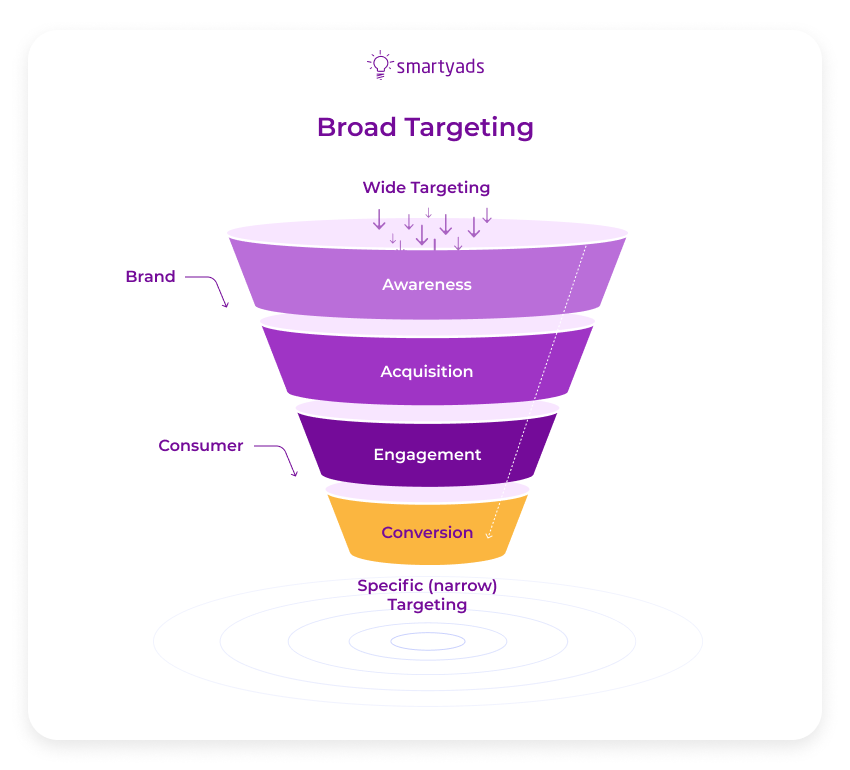
Small or big business: does this thing matter?
Data is a thing that determines a lot in marketing, and for a smaller business or start-up, the relevant data about their audiences might be a scarce resource. For this reason, in order to get a better insight into what works better, it is recommended to start with a broader reach for smaller companies.
After a certain time, when more data is accumulated, one can gradually transition into a narrower campaign approach and serve targeted ads only to the most interested users.
Broad marketing approaches are also popular among big brands and companies as they have bigger ad budgets and typically invest in brand awareness campaigns. However, even if you have a large customer base, it is still better to develop a well-thought-out plan, divide the clients into segments, and tailor the ad message for each group individually.
What is the essence of programmatic?
Now let's talk about tools and resources, thanks to which you can determine how your ads are targeted and delivered. Google ads, Facebook advertising platform, and independent programmatic platforms are used as marketing and advertising automation tools.
What is programmatic advertising? Programmatic is currently a key component of many advertising strategies — broad and narrow ones. Thanks to programmatic, brands can target their potential customers precisely and focus on leads and audiences of their highest interest.
In a fraction of a second, the real-time bidding algorithm can decide what user or potential customer should see the ad and where. Let's review how the algorithms can determine this process.
How programmatic enables targeted advertising
If shortly, programmatic has a range of platforms that make up the entire ecosystem. Marketers and advertisers use a demand-side platform — they enter the dashboard and configure the settings to adjust campaigns to their own needs.
These settings include targeting options such as age range, gender, location, language, IP, device type, and many other options that become decisive during the ad serving. A DSP also helps to configure the campaign's budget so that it gets spent according to the marketing plan.
As soon as a visitor gets to the website, information about the ad placement and the user's targeting characteristics are passed in the request to the DSP. Then, DSP decides if the data in the request matches the conditions set by the advertiser. If yes, the RTB auction starts, the highest bidder wins the impression, and then the ad of the highest bidder is getting served to the user.
Thanks to this, marketers can focus only on relevant audiences while saving money and measuring every dollar spent per campaign.
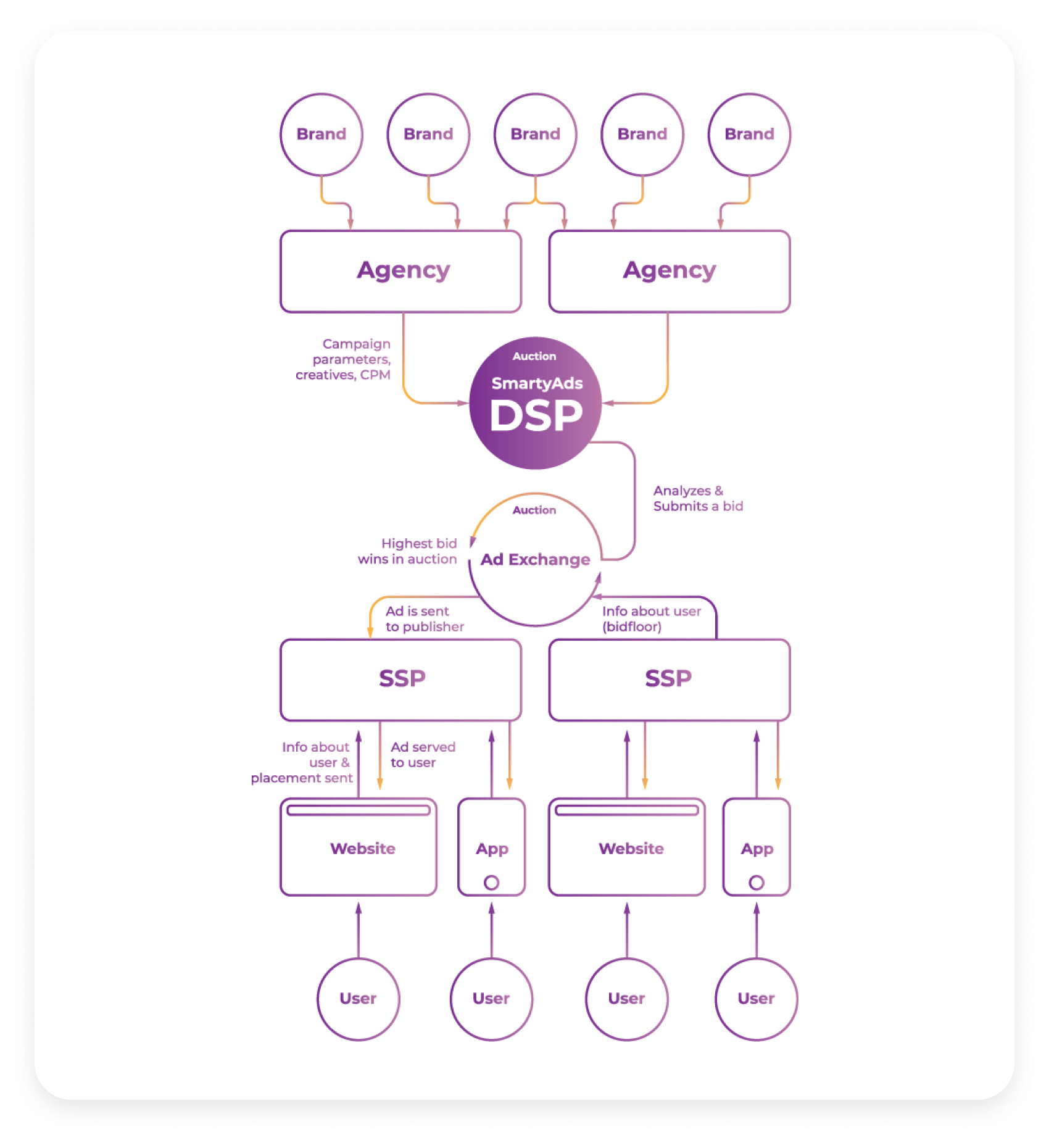
With narrow targeting delivered by programmatic, it's also possible for the brands to target an audience by their physical location and run geotargeting campaigns. This way, an advertiser can address people outdoors, e.g., when they stay in the vicinity of their brick-and-mortar stores.
Read more about the benefits of targeted advertising.
Why too narrow targeting is a big "no"
At the same time, sometimes marketers fall within the trap of setting too many targeting criteria, which narrows the traffic and becomes the major issue that messes with their advertising campaign outcomes.

Strategies to use for correct targeting on DSP
Relatively broad targeting
If you only want to familiarize your target audience with your offer, aim for the top of the funnel and raise brand awareness. You will capture the attention of a bigger pool of users. Thus, you will have more served ad impressions. Brands that have bigger ad budgets will benefit from a wider campaign approach. The marketing performance will increase over a long period of time.
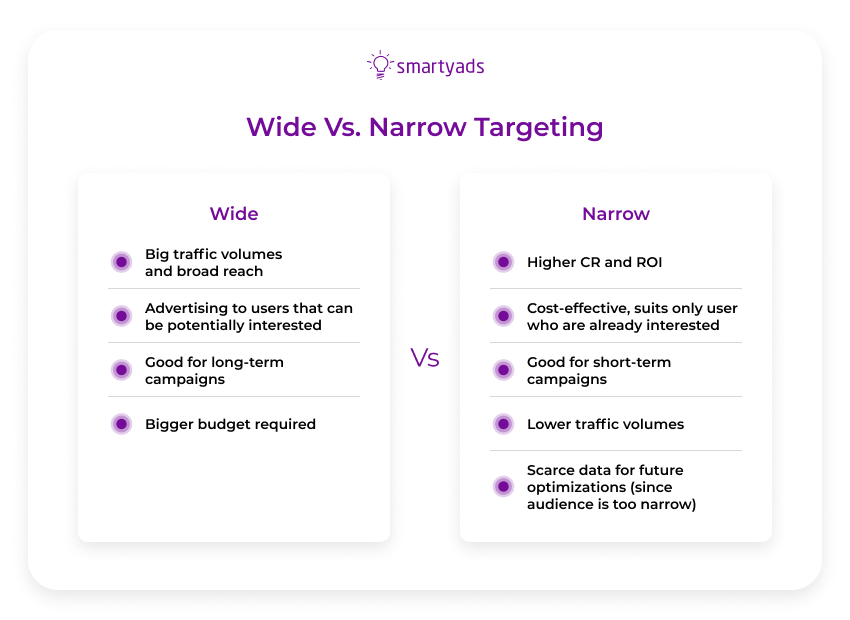
Relatively narrow targeting
Focus on a narrow customer niche if you want to perform better in the short run — high ROI, high sales, and conversions. When the window is narrow, and you target only the selected people, expect your ads to be seen only by these selected people.
Also, if you decide to go for more narrow targeting, it will be the right strategy to polish your creative to perfection; it will matter a lot for promoting your products or services and making your offers attractive.
An attractive creative can also work as a lead magnet, increasing your CTR. Find out how to adjust your creative size so that they perfectly suit all screens and bring in new customers and leads. Read more about creative size optimization on SmartyAds DSP.
What targeting options can you find on DSP?
Marketing and advertising service providers can offer advertisers a lot of options for driving leads and implementing smart targeting strategies. For instance, on SmartyAds DSP, advertisers can run broad brand-awareness campaigns and narrow ones for certain segments of customers.
SmartyAds DSP targeting options
You can easily elevate your marketing campaigns with precise targeting options available on SmartyAds DSP. There are many options to choose from, as shown in the screenshot below — age range, language, device type, OS, and so on.
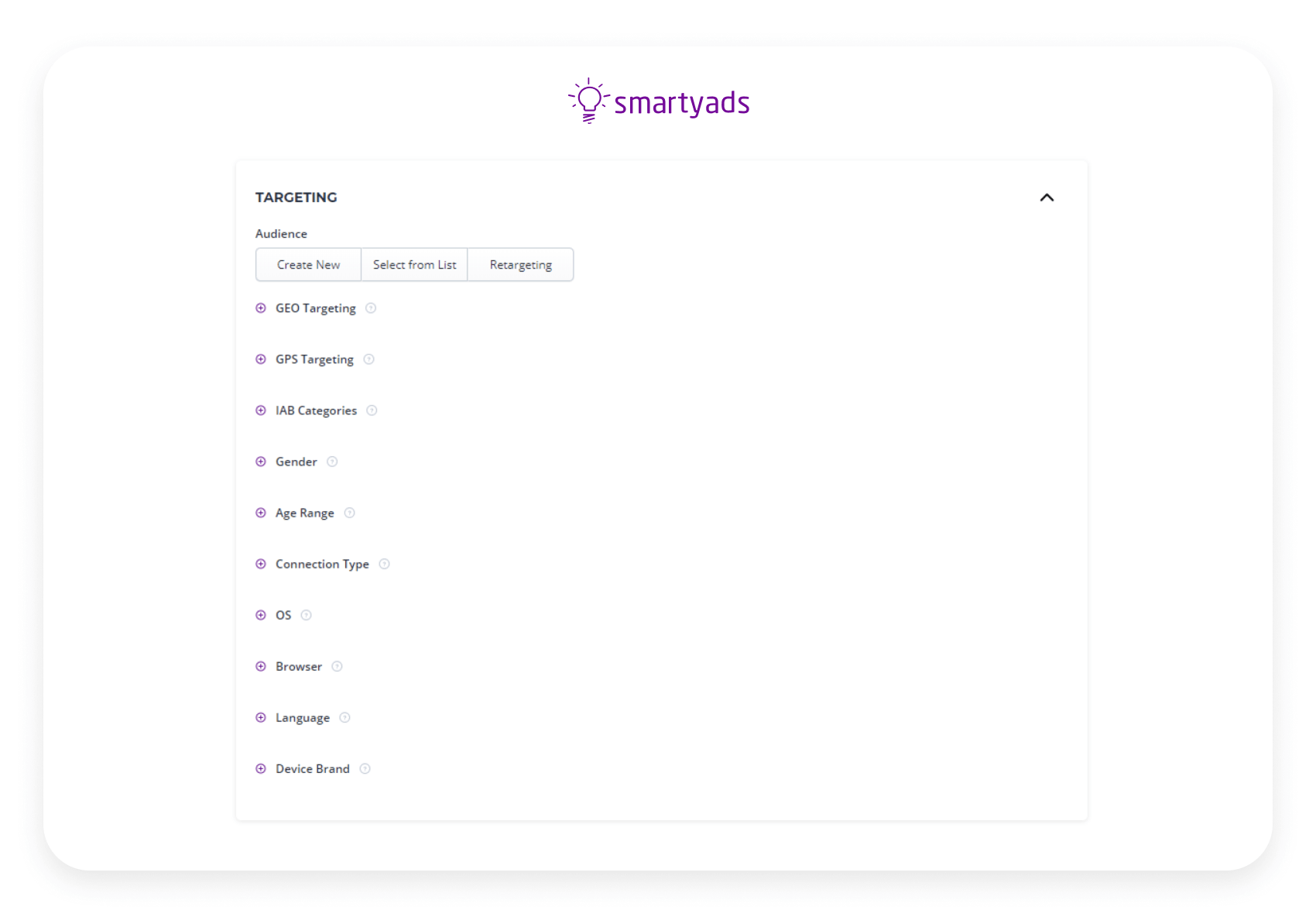
For example, during your marketing campaign, you can address only those customers that come from mobile traffic. For this, you should fill in the basic campaign settings, as you can see in the screenshot below.
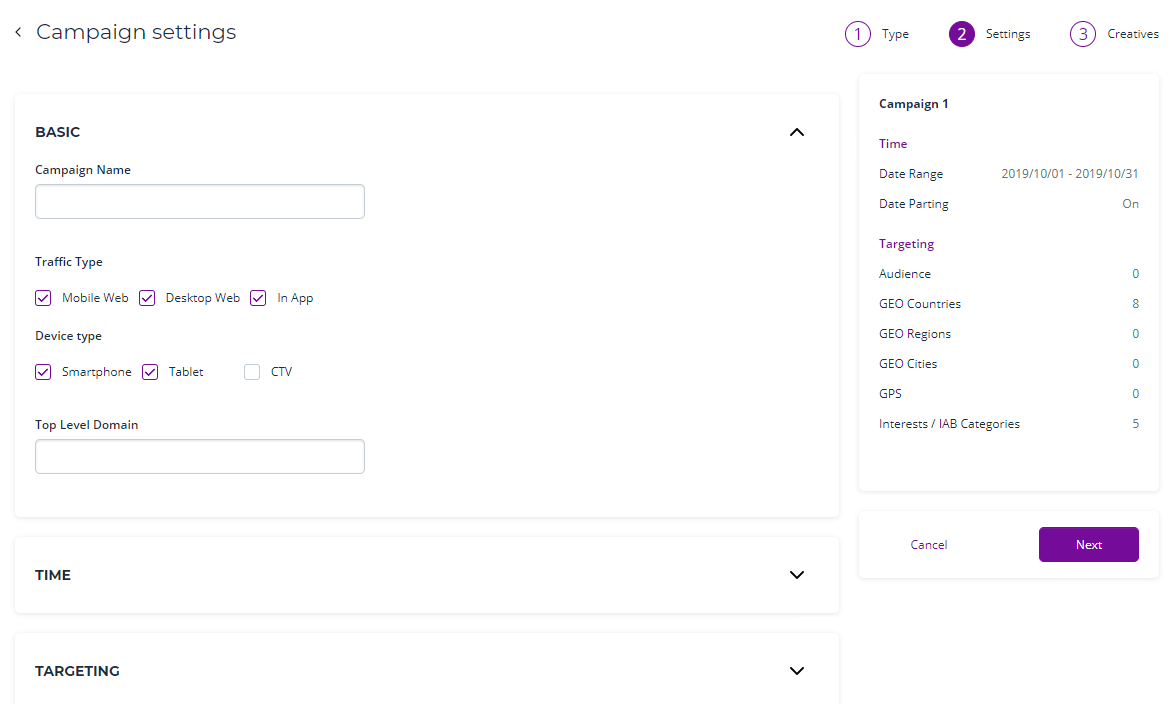
In case you advertise in different time zones, you can also adjust the dayparting and let the campaigns be active only during certain days or time of the day. As you can see on the screenshot, you can make your campaign run all the time or only during the selected date range.
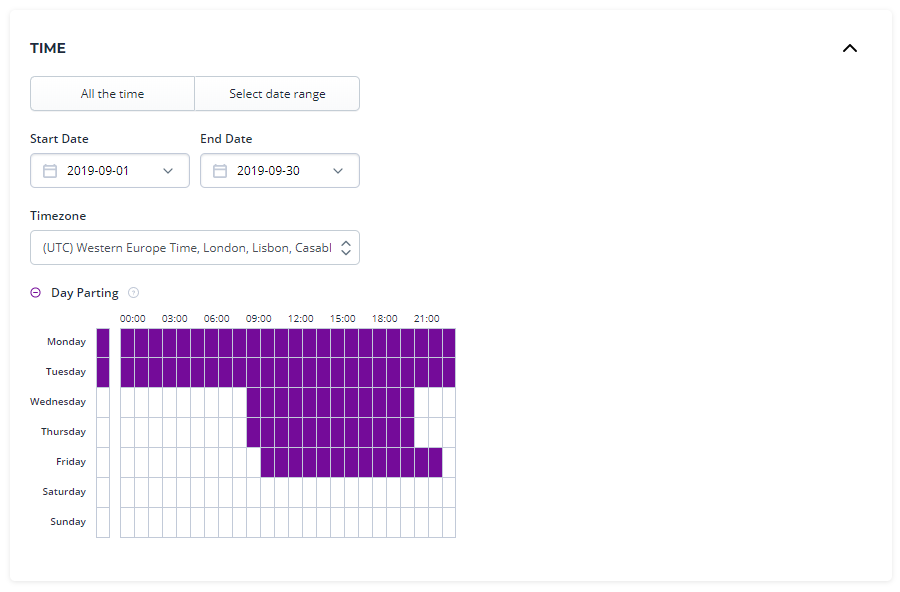
Read more about what dayparting is and how to adjust it for more effective targeting.
How to understand when your targeting needs correction?
If you use certain marketing strategies, it's important to be sure that they work as intended. So how should one understand if their targeting is effective or if it really needs some serious recalibration?
No traffic
Insufficient traffic is the first and most important indication that your targeting needs revision. In other words, if you don't receive enough served impressions over the certain planned period, that's a big sign that you narrowed your targeting too much by applying too many options that filtered out most of the users who otherwise could have seen your ads.
In this case, you need to gradually make your targeting broad and see what happens and whether it brings you more leads, clicks, and conversions or raises your selling deals.
Dull creatives
If you don't get traffic at all, it might indicate that leads or potential customers do not show interest in your product. In order to make sure you don't stumble upon a problem with dull creatives that fail to drive the attention of leads, always do the A/B or split tests of various creative versions before airing the campaigns.
If you want to find out more, read the guide to creative best practices to increase the effectiveness of your advertising messages.
In case you don't have a team of staff who can craft an effective creative strategy and implement the design and concept according to your objectives, ask our partner, Jam. SmartyAds has made an exclusive partnership with this global creative agency specifically to help you out with this task. Contact your SmartyAds manager to find out more details.
How to improve your current targeting strategy?
First of all, it is worth mentioning that a perfect approach to targeting will largely depend on the industry, specifics of your business, and several additional factors that play a role in overall effectiveness.
If your budget allows, start with broad targeting. With this approach, after some time, you will find out different demographics that bring you the best results. After this, you can also create different campaigns for various audience segments, which is supposed to raise your ROI, the number of leads, and sales.
To sum it up: elevate your marketing efforts
Broad and narrow marketing approaches have their own pros and cons. While the broad approach is more advantageous in terms of reach and lead generation, the narrow one gives you a chance to achieve measurable performance and save money by eliminating irrelevant impressions.
The main profit of targeting is that you are addressing those people who are most likely to be interested in your product or service. Thus, these people have a higher chance of becoming loyal customers.
Programmatic advertising is a tool that enables effective targeting and correct delivery of advertising. However, it is important to remember that applying too many options may also limit your traffic opportunities.
Remember to monitor your impressions on DSP and make the necessary adjustments in a timely manner to ensure that targeting is working its best.
Run strong targeted CPM ad campaigns programmatically on SmartyAds DSP!
FAQ
Broad targeting works best for brand awareness, reaching new audiences, or when you have limited data. Narrow targeting is effective for campaigns focused on conversions, sales, or highly specific audiences. Often, marketers start broad and narrow down over time as they gather data.
Programmatic platforms like DSPs automate ad delivery using audience data. When a user visits a website or app, the DSP decides if they match your campaign criteria. If so, your ad participates in an RTB auction, and the highest bidder wins the impression—all in milliseconds.
On platforms like SmartyAds DSP, you can target based on:
Age, gender, and language
Device type, OS, and IP
Location and geotargeting
Time of day or dayparting
Custom audience segments (provided by LiveRamp) and more.
Start broad if you lack data, then segment audiences over time.
Analyze performance by demographics, behavior, and location to refine campaigns.
Polish creatives to increase engagement, especially for narrow campaigns targeting smaller groups.

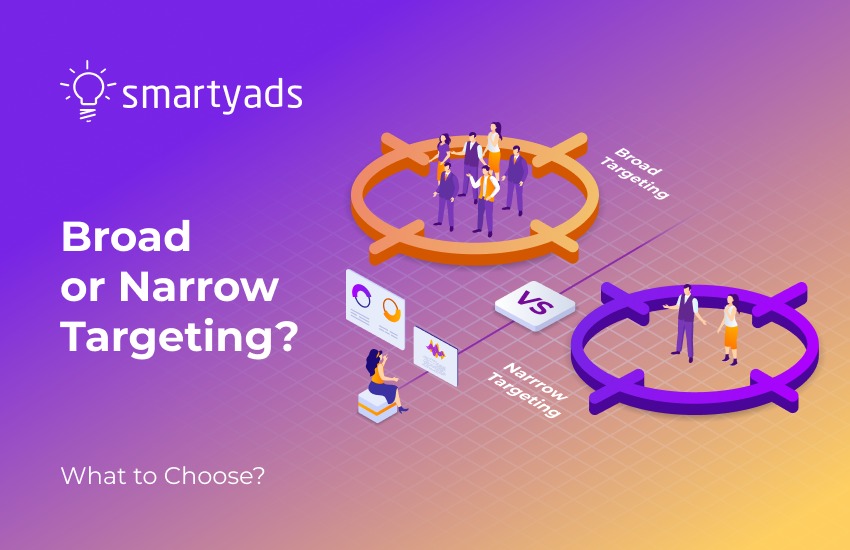
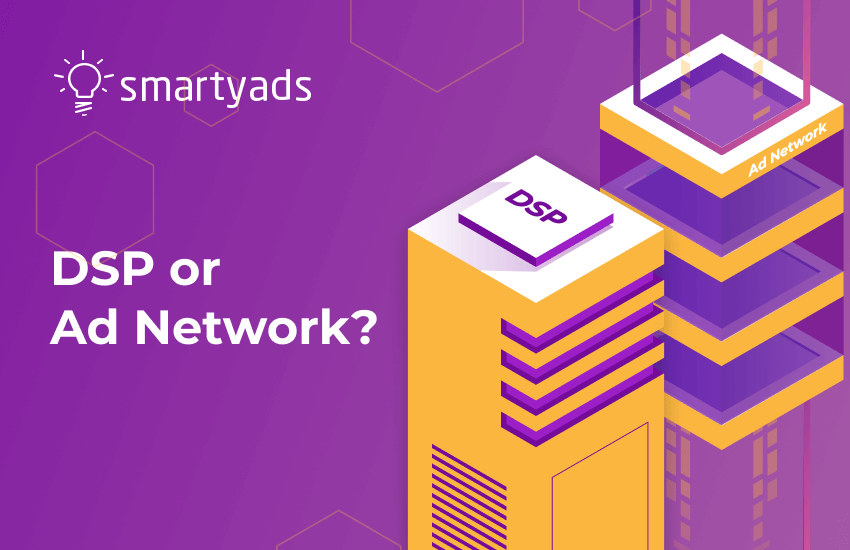
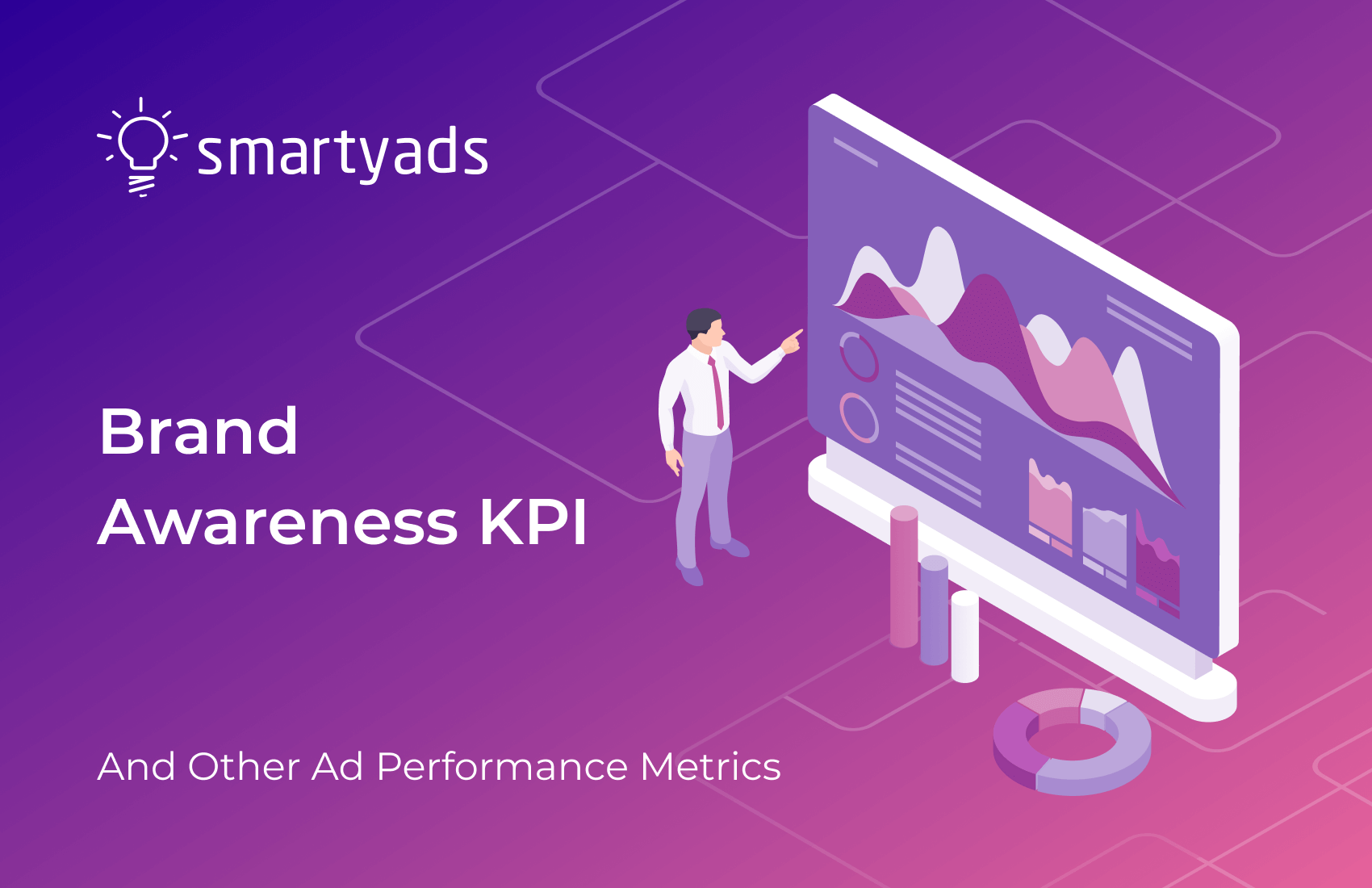
.webp)
